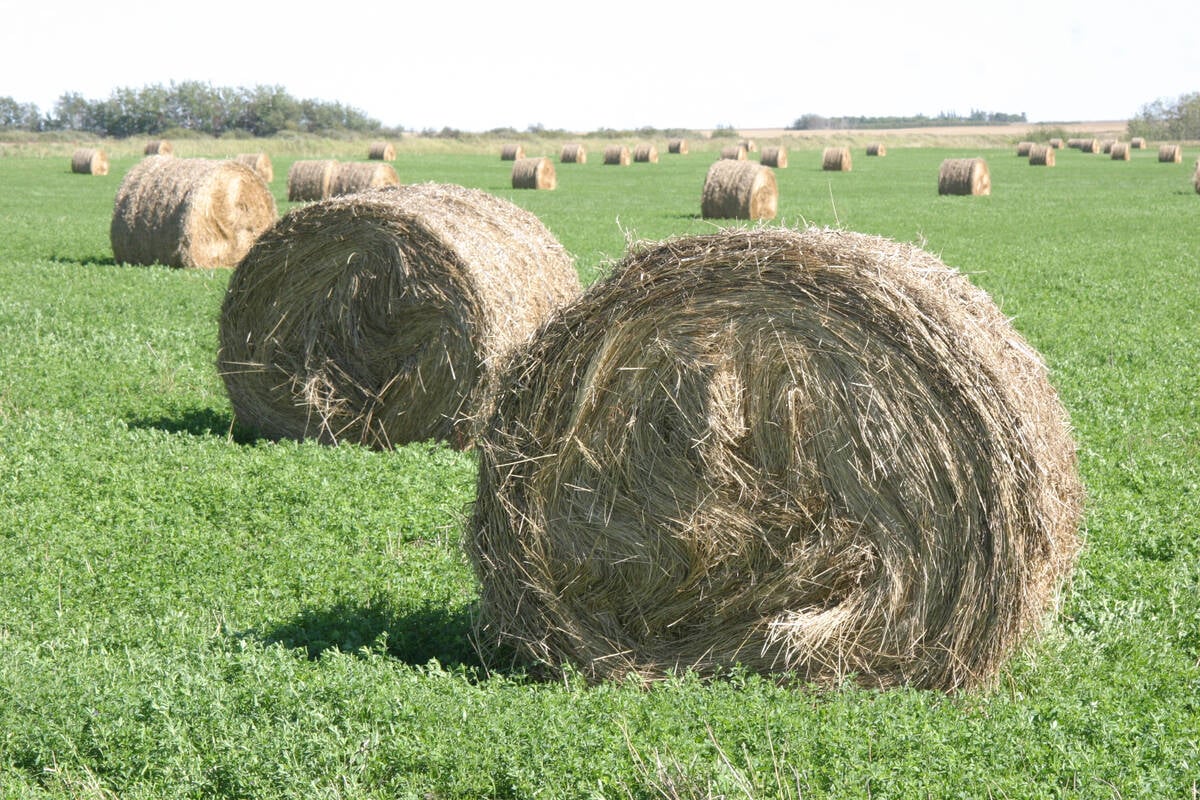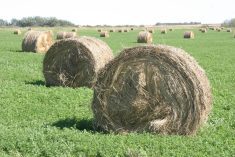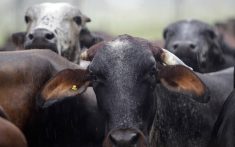When five-year-old Ronnie Hanson ran down the alleys of the Calgary bull sale barns in 1944, he never dreamed he would still be attending the sale in 2000 with his five grandchildren.
The bull sale veteran has never missed a sale and claims to remember every champion that walked through the sawdust.
To mark the 100th anniversary of the Calgary bull sale, old and new Alberta cattle breeders showed up in force. A total of 572 bulls were sold for more than $2 million to buyers from Canada, the United States and Mexico.
Read Also

Breaking down successful winter feeding into six steps
It’s that time of year when it is important to start planning for a cow herd’s winter feeding program. Here are six steps I think are necessary to consider when getting your feed tested.
This was a good year for Hanson because his reserve grand champion Hereford was the high seller at $36,000. The Airdrie, Alta., breeder has had the high seller seven times in the sale’s history and has often earned six figure paycheques from this sale.
While the numbers are dizzying, Hanson and others point out those prices are not the norm. Nor do these sales follow the fall calf markets when prices can go through the roof or wash away in the tank.
“Consignment sales go in waves. They have a pretty good sale so people think they paid more than they should. The next year they’re down,” said Hanson as he waited for a string of seven Herefords to enter the auction ring.
The early 1980s were marked by extreme prices. A Hereford once sold for $280,000 in less than two minutes, but those bids do not arise often anymore.
“We’re in better shape now,” he said. “It’s more practical and the spending is more sensible.”
Hanson joined a contingent of purebred producers who run more than one breed. He got into Red Angus in 1988 to provide a wider variety of bulls to his commercial customers.
This year he entered seven Herefords and six Red Angus animals. Unfortunately, the cattle were scheduled to be in two rings at opposite ends of the barn at the same time.
The logistics got tricky when the family realized they didn’t have enough handlers. Even though they did find enough people to hold halters, the day was tense.
“It seemed like a good idea at the time,” he shrugged.
Nevertheless, the bull business is serious stuff.
It’s a high-tech marketplace where breeders must stand behind what they sell and have the records to prove their bulls are best.
Hanson, past president of the Canadian Hereford Association, believes in maintaining extensive records and staying in touch with the needs of commercial cattle producers.
Records tell producers how a bull is expected to perform by providing birth weights, average daily gains, dams’ and daughters’ milk production, and progeny performance records.
While some of the bulls sold in Calgary move into other elite breeding herds, the mainstay is the ordinary rancher looking for a sturdy bull.
“It’s a good sale to reach commercial people,” said Don Grant, of Bowden, Alta.
Calgary is another market for Grant’s Salers beyond his production sale and on-farm sales.
A purebred breeder since 1986, he likes the extra work of keeping purebreds and developing genetic lines.
“We cull heavy and we try to sell the best.”
Careful selection paid off this year, when Grant walked away with the grand champion Salers banner and a $4,500 bid for a black yearling bull.
Happy with the price, he does not want to lose touch with the ordinary beef producer.
“Everything comes down to what the commercial man thinks.”
Sale president Hazel George agrees that Calgary is a measuring stick.
The sale offers all types and sizes.
“There’s a bull type for everybody and the bulls are always affordable.”
A Charolais breeder from Airdrie, Alta., George appreciates humane animal care and good salesmanship.
“The consignors bend over backwards to help the buyers to make sure every last bull is cared for.”
Computer technology is part of that salesmanship.
More producers are developing their own websites to provide photos and statistics on their bulls. They keep computerized records and use ultrasound to measure meat quality.
“You have to be there if you’re going to sell your bulls,” said George.
But like all natural cattle producers, breeders like Hanson, Grant and George know it’s the hands-on work and instinctive ability to select the outstanding over the average that puts them on top.
“You still have to use your eye,” George said.
“That tool will never go away.”















